| Jianli Pan, jp10@cse.wustl.edu (A survey paper written under guidance of Prof. Raj Jain) |
Download |
As an emerging technology, Ultra Wide Band (UWB) wireless communications provides a very different approach to wireless technologies compared to conventional narrow band systems, which brings huge research interests in it. Because of this, UWB has many potential applications to be researched. One of the promising application areas is in medicine. Some unique features of UWB make it very suitable for medical areas. In this paper, we will give a survey of the features and its current major applications in medical areas such as medical monitoring, and medical imaging, which are discussed and analyzed in detail. After that, other applications, future potential applications, and research directions are discussed. Current research organizations in this area are also given. At last, we summarize the whole survey paper.
Ultra-WideBand, UWB, Medical Application, medical monitoring, medical imaging
Ultra-wideband (UWB) radio is an emerging technology with some unique attractive features which are combined with researches in other fields such as wireless communications, radar, and medical engineering fields. Formally before 2001, UWB's application is limited mainly in military areas. However, since 2002, FCC has gradually allowed the commercial usage of these bandwidths, which makes it possible that every common people could benefit the UWB features. Federal Communications Commission (FCC) regulate that the frequency for the UWB technique is from 3.1GHz to 10.6GHz in America . However, in Europe , the frequencies include two parts: from 3.4 GHz to 4.8 GHz and 6 GHz to 8.5 GHz. The power radiation requirement of UWB is strict and it would not disturb the existing equipments because UWB's spectrum looks like background noise. The UWB spectrum mask defined by FCC and the CEPT proposal is shown in Fig. 1[Allen05].
With the abundant frequency resource, the UWB has two modulation modes: the Impulse Radio (IR) and Multi-band OFDM [Xu07]. They have different advantages and could be applied in different fields in medical area. MB-OFDM mode of UWB could be used for small range high speed data communications. For IR mode, by using low-power ultra-short pulses (sub-nanosecond interval), UWB has many applications: short-range high-speed broadband access to the Internet, accurate localization at centimeter level, and high resolution penetrating radar in the medical engineering et al. In these applications the accuracy detection and location is much adapt to the medical monitor, and the high resolution imaging is suitable for pathologic imaging, which is modulated by the IR. So the UWB technology attracts more and more researchers' interest in the medical applications area. In a word, the two modes of UWB modulation illustrate the two main function of UWB: Sensing and Communicating.

Fig 1. UWB Spectrum Mask as Defined by FCC and the current CEPT proposal [Allen05]
In discussing this capability, we could compare UWB with ultrasound. Although UWB and ultrasound are in fact very similar and many of the signal processing techniques used in ultrasonic systems can be applied to UWB systems, it is different from ultrasound which has broad application in today's world. The major difference is that ultrasound is basically a line of sight technology and it is very short range (It is used for medical imaging but it typically works only over a few inches).
However, UWB is different because it does not use high frequency sound waves which can not penetrate obstacles. UWB uses RF pulses and has high gain, which means that UWB impulse of every bit is so many that it can get much higher gain than other popular conventional spread spectrum systems. That also explains why UWB can penetrate through walls. This makes UWB viable for wide area applications where obstacles are certain to be encountered, although ultrasound may also be in operable in these circumstances. The feature makes it easy to image organs of human body for medical application.Since UWB uses very short pulses for radio transmission and very careful design of signal and architecture, the transmitter could be designed simple and allows extreme low energy consumption, which also enables the usage of long-life battery-operated devices. These features are quite similar with the Wireless Sensor Networks (WSN) nodes which must work under extreme condition and require very strict power control mechanism and high power efficiency. The inherent noise-like behavior of UWB systems make it highly possible to deploy medical sensor with UWB since the signal is hard to detect and also excel in jamming resistance. Wireless Body Area Networks (WBANs) for surveillance of human body can be deployed due to this feature.
Before we want to apply UWB into medical field, we have to answer several key questions. For example, what can be reasonably devised? What kinds of medical problems really deserve UWB technology for their solution? Is UWB technology able to address yet unresolved medical problems [Staderini02]?
To address these questions, we think about them and conclude several most wanted technical features for any electrical medical instrumentation, for example, non-invasiveness, low power, non-contact remote operation, biocompatibility, biological friendliness, environmental friendliness, and intrinsic electrical transducer. Actually UWB have all of these positive features. However, for most wanted clinical features such as user friendliness, “Imaging” properties, technical understandability by the users, need to get physiological measurements, high sensitivity, and high specificity, UWB needs more research.
Among the UWB positive features we have discussed, the accuracy detection and localization is suitable for medical monitoring application, and the high resolution imaging is suitable for pathologic imaging.
In short, these bunch of features of UWB that we have discussed in this section make it very suitable for medical areas. In the following sections, we will discuss some tipical UWB medical applications which benefit these features, especially for medical monitoring and medical imaging.
Back to
Table of Contents
Due to the features we have discussed in section 2, UWB is very suitable for the application of medical monitoring. These monitoring applications could be patient motion monitoring, wireless vital signs monitoring of human body, and the medicine storage monitoring.

Fig 2. Intensive Care Unit monitoring using UWB
In Fig 2, signals emitting from UWB radars setting on ceiling can reflect when they meet human body. When the patient moves, the reflected signals will fluctuate. The fluctuation of signals denoting the movement of objects is transferred to the control center of the surveillant. The information could be fed back instantaneously to the doctors or nurses. It could also be recorded and analyzed in the future for the health condition of the patient. A sample of the results of this application is shown in the Fig 3 [Xu07]. The pulse amplitude fluctuation shows that there is movement of the patient in the room. The higher the pulse amplitude is, the closer the person move to the UWB radar. The application could be used to monitor the patients whether moving in the unallowed time. UWB radar could measure the speed and position of the patient in the room.
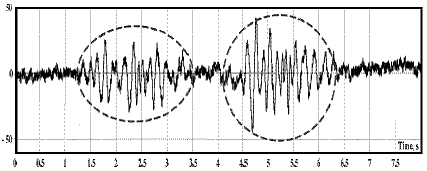
Fig 3. Sample of result of the patient movement detected [Xu07]
Since UWB has a short detection range of less than 10 meters, if we want to monitor a large area, more UWB sensors will be needed. Because of the small distance and high data rate communication function of UWB, these sensors using UWB sub-nanosecond pulses can be motivated for gathering and exchanging a large quantity of sensory data. The energy requirement for UWB devices is small and is suitable for the sensing for a long time. Zigbee and Bluetooth devices are less suitable for medical applications because their energy requirement is higher and data transmitting speed is low.
In fact, the UWB-enabled sensors could not only detect these macro movements, it could also detect micro movement inside human body [Staderini02]. For example, the capability of non-invasive sensing of vital parameters such as respiration system of human body is important and useful in medical engineering. The UWB monitoring of respiratory movement in emergency rooms or intensive care units will be attractive and save much cost especially for large-scale hospitals. Some other typical vital sign monitoring application of UWB include the Cardiology system, Pneumology system, Neurology system and etc.
There are increasing requirements for the vital sign monitoring applications of UWB, for example, health monitoring for the old people. The deployment of UWB vital signs monitoring system will enable proactive home monitoring of the patients, which in an aging population could decrease the cost of healthcare by moving some amount of eligible patients from hospital to home, and keep the home monitoring UWB system connecting to the central controlled surveillant center run in the hospital. To accomplish this goal, we require not only monitoring but also the transmission of the data.The UWB radar can also be used for guarding the medicine storage room [Xu07]. The UWB electromagnetic waves form a defense sphere detecting any moving objects around the guarded perimeter line. Any unauthorized people want to get access to the monitored object will be alarmed when they are close enough. The alarm could be initialized by the fluctuation of radar signals corresponding to the things want to cross the secured line. The fluctuation graph will be similar with Fig. 3.
In short, the UWB's feature make it very powerful and promising in the area of medical monitoring. It can not only monitor the motion of the patient, the vital signs inside human body by wireless RF waves, it can also be used in monitoring the medicine storage. We can believe that in the near future, there will be more UWB equipments and apparatus in these areas.
Back to
Table of Contents
Actually, the first applications using UWB radar technology was for heart monitoring since the heart related research has a high impact on general public. A scientist name Thomas McEwan in Lawrence Livermore National Laboratory (LLNL) developed the first patent on “radar stethoscope” as shown in Fig.4 [McEwan96] .

Fig.4. The first Mc Ewan's patent on the “radar stethoscope” [McEwan96]
Thomas also invented a 3-D UWB radar camera to monitor the heart movement. The original model of UWB clairvoyance radar used novel high speed and low-cost sampler. The UWB radar is able to detect, non-invasively, movements of heart which is shown in Fig.5. And Fig. 6 [McEwan96] is a sample heart imaging using UWB in the “Visible Human Project”.
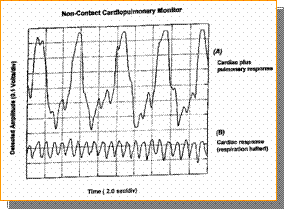
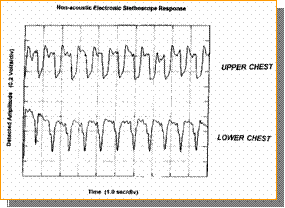
Fig.5. Images from McEwan's Patent (Patent No. 5,573,012) [McEwan96]
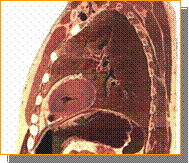
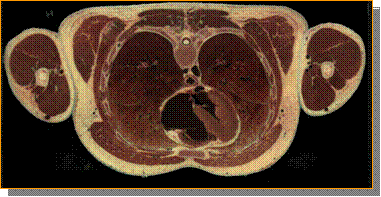
Fig.6. The heart imaging using UWB in the “Visible Human Project” [McEwan96]
UWB transmitter emits discrete pulses to the human body and the reflected pulses from the heart arrived at UWB receiver and then the result is recorded. Signal processing is performed through obtaining the pulses response. For example, there exists a definite difference in reflection magnitude between the heart muscle and the blood when detecting the heart wall by UWB radar. Because of the impedance difference between the cardiac muscle and blood, a roughly 10% reflection magnitude of the radio frequency energy at the heart muscle-blood boundary can be expected. The UWB receiver can measure the difference, and show it on the screen, which reflects the status of heart.Similar with the Cardiology imaging, the same rule can be found for reflection at chest/lung interface, air/chest interface, and at vessel boundaries. All of them could be imaged by adjusting the emitting pulse power.
With UWB medical imaging system, we could monitor the respiratory patterns, the Apnea monitoring in infants, obstructive sleep apnea monitoring, Polysomnography (sleep related studies), dynamic chest diameters measurement, allergy and asthma crisis monitoring, and chest imaging.
With the UWB dielectric properties, the organic motion-related signal is obtained from a UWB radar device aimed at the human body. Especially for heart as a cardiovascular monitor, the UWB radar could detect cardiac contractions, arterial wall motion and a breath monitor to detect respiratory movements. Because the UWB electromagnetic signal is not influenced by clothes or blankets, and the effective range is only a few meters, the use of the UWB radar in cardiac motion evaluation can be an important complement to the electrocardiogram.
Another possible medical imaging application of UWB radar is in obstetrics imaging, shown as Fig. 7 [Staderini02].
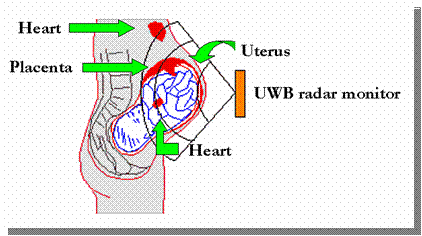
Fig. 7. Obstetrics Imaging using UWB radar [Staderini02]
However, unfortunately great concern regarding the RF safety in UWB for the newborn exists although everybody think the ultrasound generally is safe. The "emissions" from the device make this concern a "fear generating" situation. Obviously, more time is needed for everyone could accept the UWB radar. In the future, UWB radar device for obstetrics will be very useful and might be produced in large scale sales.
Actually UWB radar emission is safe and the system is well suited for chronically positioned equipments to monitor the last period of pregnancy or to assist in evaluating labor progress. UWB radar in this application area has many advantages over current ultrasound based fetal monitoring system. These new features include: no contact with patient, unimpaired mother and child care, remote operation, no cleaning and easier use.
UWB could also be applied in monitoring and imaging in the Ear-Nose-Throat organs. A typical application is the medical application of the throat microphone which is a device that could monitor vocal chords movement by means of UWB radar, as shown in Fig. 8 [LLNL01].

Fig. 8. Throat microphone using UWB radar( Image from LLNL MIR website, Livermore , USA ) [LLNL01]
However, the medical uses may not be concerned with voice at all, compared with the attention with the vocal chord diseases such as inflammations, allergies and cancers in the vocal chords. For medical purpose, a vocal chords' movement monitor is much more valuable than a “simple” throat microphone. Fig.9 [Staderini02]. shows the vocal chord diseases monitoring of the UWB radas.
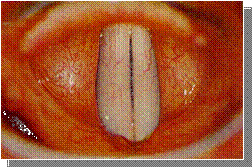

Fig. 9. Vocal chord diseases could be monitored by UWB radars [Staderini02]
In a word, UWB applications in medical imaging constitute a very important part of the medical applications of UWB. More different medical equipments will be invented and developed in the near future addressing different parts of human body. With the interaction model of RF wave to human tissue being more completed and mature, the medical imaging equipments using UWB will become more popular, and will be well accepted by everybody.
Actually, the University of Iowa's National Center for Voice and Speech and the UC Davis Voice/Speech/Swallowing Center are actively working on speech sensors using UWB radar technology. The correlations were found between UWB radar signature and other conventional tracings while recording the movements of lips, tongues, glottis and tracheal wall.
The UWB technology is also being used in biofeedback-based rehabilitation protocols such as: respiratory rehabilitation, cardiovascular rehabilitation, and occupational therapy. UWB is also used in artifical prosthesis control and actuation of wheelchair driving systems and smart-home systems.
Other possible medical application areas of UWB include:
• Underwater medicine measurements.These application areas of UWB are very new and need more time to research and develop before it could be more mature and be of more economic effect.
In a word, to validate UWB radar as a competitive technology to be used in medical area, we need to know better the genesis of the UWB radar signal, and know better the features and how to make use of these features, so as to correlate these features with the already known electro/mechano biological phenomena, and find new applications in new areas or replace the old equipments with new UWB-enabled ones.
Furthermore, an authoritative scientific model of UWB pulse interaction with the living tissues is required before people could accept this new technology and deem it as a safe technology [Gabriel96]. UWB echos coming from the tissues and structures of the human body are mainly explained in the framework of the Time Domain Reflectometry (TDR) theory [McEwan96] . However, in the future, it is also possible for the UWB echo to be interpreted and explained in the frequency domain. Many reasearches are being carried out in this area, and the interaction model need to be set up and refined in the future.
Future research studies in the medical domain to correlate UWB include:
• ultrasound heart M-Mode tracings.In a word, based on the current UWB application in other fields, we could find potential future possibility to move the application to medical applications. Or at the same time, maybe completely new applications may emerge. In this section, we will deepen the analysis and try to address some potential direction the application of UWB could go in medical areas.
• Lawrence Livermore National Laboratory. (Areas: Heart, Breath, Speech)
• University of California Davis. (Areas: Breath, Speech)
• University of California Berkeley.(Area: Speech)
• University of Iowa. (Area: Speech)
• Tor Vergata University of Rome.(Area: Heart)
This list may not be complete. For the newest research progress, please refer to the publication resources of these organizations.
In this paper, we give a brief survey on the medical applications of UWB technology. Firstly, we analyze the two modulation modes of UWB, which make it useful to be implemented in medical applications where require accuracy detection and location and high resolution imaging, as well as in small range high speed data communications. The major features of UWB that make it suitable for medical areas are given and discussed. After that, two major UWB applications: medical monitoring and medical imaging are analyzed and discussed in great detail. We also discuss the UWB applications in other medical areas such as Underwater medicine measurements, Space medicine measurements, Sport medicine measurements, Military medicine, Emergency medicine. In the end, the research direction and the current research organization in this area are given for further reference.